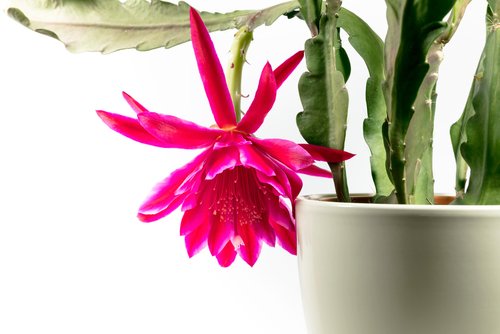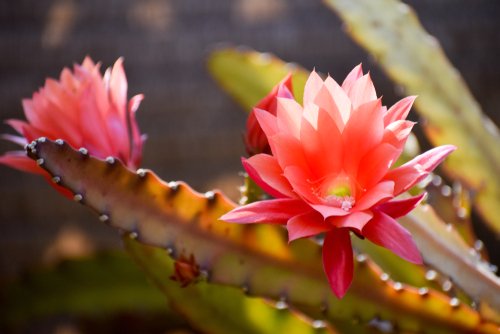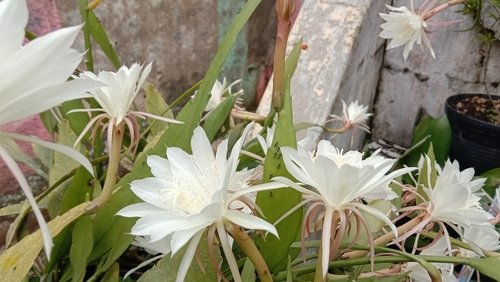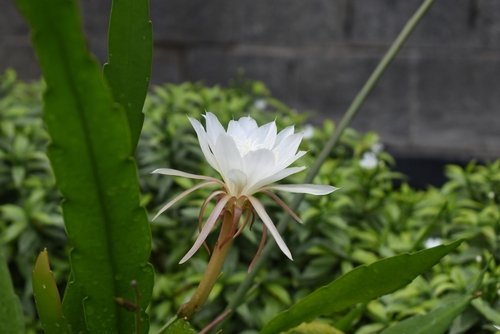Epiphyllum oxypetalum is a type of night-blooming cereus, a type of cactus plant. One of the peculiar features of this plant is that its flowers are short-lived and only bloom during nights, typically lasting only for a night. The plant is commonly known as the Queen of the Night, or Princess of the Night. It is essential that the plant gets the right environment to grow and thrive. Read on to understand how to grow and take care of Epiphyllum oxypetalum plant. Oxalis Plant grows in the tropical regions of South Asia and South America. Learn more here.
See also: Crape Myrtle: Flowers that bloom in the summers
Epiphyllum oxypetalum: Quick facts
| Plant name | Epiphyllum oxypetalum |
| Common names | Queen of the night (Queen Night Flower), Princess of the night, Dutchman’s pipe cactus |
| Family | Cactaceae |
| Found in | Southern Mexico, South America |
| Flower | Fragrant, nocturnal, and white, pink, or yellow in colour |
| Fruit | Rare, purplish red, angled, and oblong in shape |
| Flower blooming season | Late spring through late summer |
| Benefits | Medicinal properties |
See Also: Cissus quadrangularis: How useful is this medicinal herb?
- The plant is widely grown in tropical regions, particularly in southeast Asia.
- The stems of the plant are erect, ascending, or extensively branched. They contain mostly water-filled tissue.
- Epiphyllum oxypetalum is a tropical epiphyte to lithophyte, which refers to organisms that grow on another plant’s surface and get nutrients and moisture from rain, air and debris collected around.
- The plant does not have real leaves. What appears to be leaves of the plant are long, flattened stems, which can be easily rooted. They grow and reach up to 20 feet in height.
- The flowers, if pollinated, lead to the development of five-inch long, oblong, purple or red fruits. The fruits are edible. They are bright magenta in colour, while their inner flesh is whitish and has small black seeds.
- The plant produces extremely fragrant flowers growing on the margin of the plant’s flattened stems, up to around 12 inches long and seven inches wide.
see also : all about Zephyranthes Carinata
Epiphyllum oxypetalum:Flowers
Pink flowers are produced by the Epiphyllum oxypetalum plant. The flowers are funnel-like and radial in shape.

known about Zephyranthes Minuta
The Epiphyllum oxypetalum plant also produces red flowers.

Read also: Zephyranthes Candida: How to grow and care for Fairy Lily?
Epiphyllum oxypetalum: Meaning
The term Epiphyllum comes from the Greek words – epi, meaning upon and phullon, meaning leaf, while Oxypetalum refers to acute petals.
Epiphyllum oxypetalum: Benefits and uses
Epiphyllum oxypetalum plants are known to have medicinal properties. They have been used in herbal medicine for curing urinary tract infections and certain heart conditions. It is also used for treating some respiratory disorders and bleeding conditions. The plant can reduce pain and inflammation. The plants have great significance in many cultures across Asia, including India, Malaysia, and Vietnam.

Epiphyllum oxypetalum: Plant care
Temperature
The cactus plant grows well in a tropical environment instead of a hot and dry region with a temperature above 10 degrees Celsius. In cooler regions, the plants can be placed outdoors during summer and brought inside as the temperature drops. Epiphyllum plants cannot withstand freezing temperatures.
Sunlight
The plants need six hours of direct sunlight every day. Keep them in partial shade to thrive well.
Soil
Epiphyllum oxypetalum plants need sandy soil enriched with peat moss. The soil should be slightly acidic with a pH ranging between 5.5 and 6.5.
Watering
It has more water requirements than other cacti. Avoid watering the cuttings till they get sufficient time to develop roots. Watering too early may result in rotting.
Epiphyllum oxypetalum: How to grow?
In its natural habitat, the plant is seen growing on trees. However, it can be easily grown in a pot.
Make sure the Epiphyllum oxypetalum plants remain stable in a container. If it becomes top-heavy, trim the long stems. You can consider repotting it into a big container.

Epiphyllum oxypetalum propagation
Springtime is the ideal time to propagate the epiphyllum cuttings. The plant cuttings must be cured for 10 to 14 days. The calluses will form on their end, protecting the plant against rot. If cuttings develop roots, they may take three years to see flowers, as they would not bloom until they are put in a pot.
Know about: Schlumbergera
FAQs
How many times does Epiphyllum oxypetalum bloom?
The flowers of the Epiphyllum oxypetalum plant, known as the Queen of the Night, are rare and open only once during the night and wilt before sunrise.
Should I prune Queen of the Night?
Prune the plant if you find withered flowers and branches to allow healthy growth.
How long do Epiphyllum plants live?
Epiphyllum plants can thrive to live up to seven years when grown in a pot. After that, they may require repotting.
Harini is a content management professional with over 12 years of experience. She has contributed articles for various domains, including real estate, finance, health and travel insurance and e-governance. She has in-depth experience in writing well-researched articles on property trends, infrastructure, taxation, real estate projects and related topics. A Bachelor of Science with Honours in Physics, Harini prefers reading motivational books and keeping abreast of the latest developments in the real estate sector.











